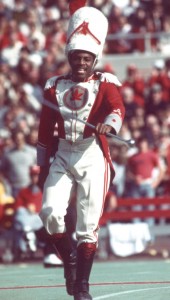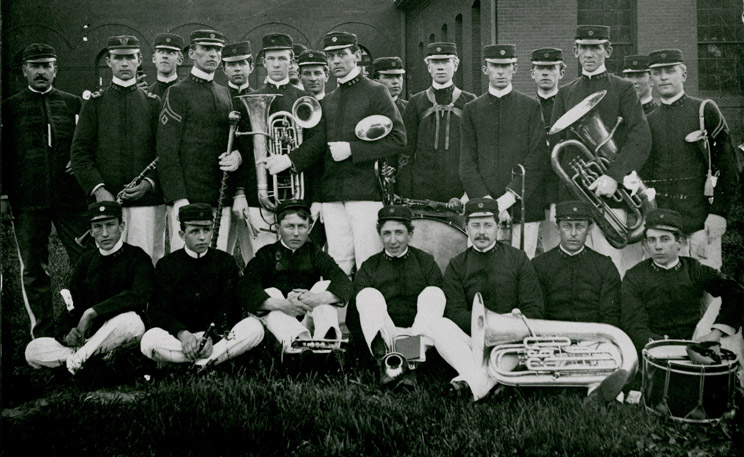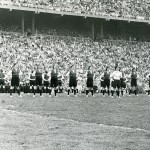The Ohio State University Marching Band began as a drum corps in the 1878-79 academic year, so from the very beginning the band has had a drum major. At that time, the drum major led the musical unit that accompanied the weekly parade of cadets and kept tempo for the units to follow, according to Script Ohio, the definitive OSUMB history.
It wasn’t until the early 1920s, though, that the band had its first drum major who exhibited the showmanship and personality to be a standout figure on the field. That figure was G. Edwin Essington, whose nickname was “Tubby.” It’s unclear why it began, but Essington was the one who started the tradition that continues today.
He served as drum major for three seasons, from 1920 to 1922. He is best remembered for leading the parade through the streets of Chicago after the Buckeyes defeated the University of Chicago on its home turf in 1921. His characteristic showmanship gained him national recognition that day: At that time, marching bands were in the process of transitioning from traditional military bands to the large, complex entertainment units we know today. The following year, he performed at the first game played in Ohio Stadium. (The Buckeyes were defeated by Michigan, but the band no doubt put on a good show.) He graduated from Ohio State in 1925.
Fifty years later, the Marching Band introduced its first African-American drum major to Ohio Stadium crowds: Dwight Hudson. He started twirling in elementary school and wrote a letter to Paul Droste, then the Marching Band’s director, that he wanted to become the band’s drum major someday. To achieve that goal, he practiced – so much that in 1975 he placed 7th in the world twirling competition. When he came to Ohio State, Dwight Hudson fulfilled his wish: In 1977 he became the drum major. Hudson served as drum major for three years, longer than any other drum major since Essington. His final performance was at the 1980 Rose Bowl.
More than 100 years after the first band formed, the first woman earned the spot of drum major.
Michelle “Shelley” Graf was not only the first woman drum major at Ohio State, but also in the Big Ten. She also started twirling at a very young age, and she performed with her high school band, although as a majorette. Since Ohio State did not have majorettes, she decided to try for drum major. She was assistant drum major in 1980, then won the lead job in 1981. Graf still works for the University as a clinical instructor in the School of Health and Rehabilitation Sciences and as a physical therapist at the Wexner Medical Center. Every November, she leads her patients in performing Script Ohio.
Filed by C.N.














Recent Comments